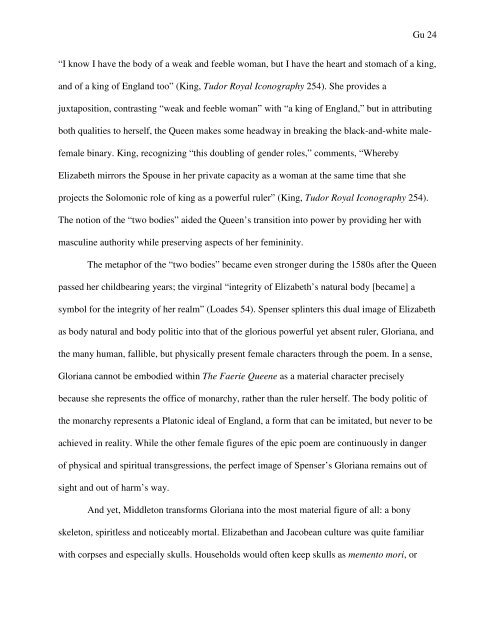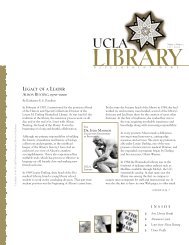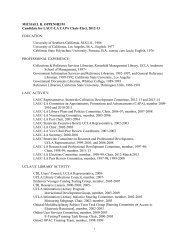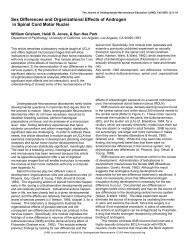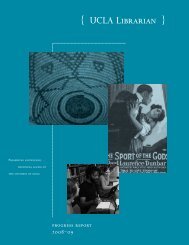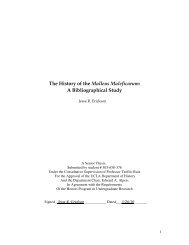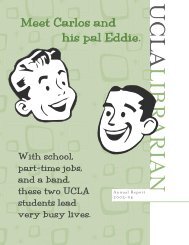Research Paper - UCLA Library
Research Paper - UCLA Library
Research Paper - UCLA Library
You also want an ePaper? Increase the reach of your titles
YUMPU automatically turns print PDFs into web optimized ePapers that Google loves.
Gu 24<br />
“I know I have the body of a weak and feeble woman, but I have the heart and stomach of a king,<br />
and of a king of England too” (King, Tudor Royal Iconography 254). She provides a<br />
juxtaposition, contrasting “weak and feeble woman” with “a king of England,” but in attributing<br />
both qualities to herself, the Queen makes some headway in breaking the black-and-white male-<br />
female binary. King, recognizing “this doubling of gender roles,” comments, “Whereby<br />
Elizabeth mirrors the Spouse in her private capacity as a woman at the same time that she<br />
projects the Solomonic role of king as a powerful ruler” (King, Tudor Royal Iconography 254).<br />
The notion of the “two bodies” aided the Queen’s transition into power by providing her with<br />
masculine authority while preserving aspects of her femininity.<br />
The metaphor of the “two bodies” became even stronger during the 1580s after the Queen<br />
passed her childbearing years; the virginal “integrity of Elizabeth’s natural body [became] a<br />
symbol for the integrity of her realm” (Loades 54). Spenser splinters this dual image of Elizabeth<br />
as body natural and body politic into that of the glorious powerful yet absent ruler, Gloriana, and<br />
the many human, fallible, but physically present female characters through the poem. In a sense,<br />
Gloriana cannot be embodied within The Faerie Queene as a material character precisely<br />
because she represents the office of monarchy, rather than the ruler herself. The body politic of<br />
the monarchy represents a Platonic ideal of England, a form that can be imitated, but never to be<br />
achieved in reality. While the other female figures of the epic poem are continuously in danger<br />
of physical and spiritual transgressions, the perfect image of Spenser’s Gloriana remains out of<br />
sight and out of harm’s way.<br />
And yet, Middleton transforms Gloriana into the most material figure of all: a bony<br />
skeleton, spiritless and noticeably mortal. Elizabethan and Jacobean culture was quite familiar<br />
with corpses and especially skulls. Households would often keep skulls as memento mori, or


